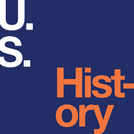
Organic chemistry is the study of the carbon and the bonding patterns that make carbon the central element to life. A well-rounded science student must take courses in organic chemistry to understand its application to various other topics, such as the study of DNA, pharmaceuticals, and plastics. In the first semester of organic chemistry, the student will cover the basics. The student will explore different explanations of how molecules bond and learn about the simplest carbon structures (alkanes) before moving on to more complex carbon structures (alkenes and alkynes) and their reactions. The student will then transition into stereoechemistry (the spatial arrangement of atoms) and spectroscopy (methods of identifying molecules) and will conclude the course by examining the four basic organic chemistry mechanisms. This last section will demonstrate electron movement in chemical reactions. Upon successful completion of this course, students will be able to: Describe organic molecules in terms of bonding, stereochemistry, functional groups, and resonance; Demonstrate proficiency in the nomenclature of organic molecules; Derive the intermolecular force of given molecules based on their chemical structures; Draw and represent organic molecules, using arrow notation to show the movement of electrons; Demonstrate proficiency in identifying various classes of reactions (i.e. addition, elimination, arrangements); Describe the thermodynamics of organic reactions using energy diagrams; Analyze the stereochemistry of simple organic molecules and the stereochemical consequences of reactions; Demonstrate proficiency in Newman projections and conformations of cyclohexanes; Demonstrate proficiency in determining whether alkyl halides will undergo a substitution or elimination reaction for a given set of reaction conditions; Describe the basic reaction mechanisms of alcohols; Demonstrate proficiency in calculating the degree of unsaturation of molecules; Describe the basic reaction mechanisms of alkenes and alkynes; Explain the concept of chirality, optical activity, and stereoisomerism; Explain the concept of a carbocation, which is an ion with a positively-charged carbon; Rank different carbocations according to their stability and/or reactivity; Explain the differences between SN1 and SN2 substitution reactions and between E1 and E2 eliminations reactions. (Chemistry 103; See also: Biology 107)
- Subject:
- Chemistry
- Physical Science
- Material Type:
- Full Course
- Provider:
- The Saylor Foundation
- Date Added:
- 04/29/2019


